Gypsophila Flower - Find Out How to Grow Baby's Breath
Baby's breath is a sun- and warmth-loving plant. It's known mostly as an addition to various bouquets one can order in a flower shop. Few people still know that gypsophila can be cultivated in gardens and on balconies. Check the needs of this plant. Learn about baby's breath varieties and find out why it's worth having.
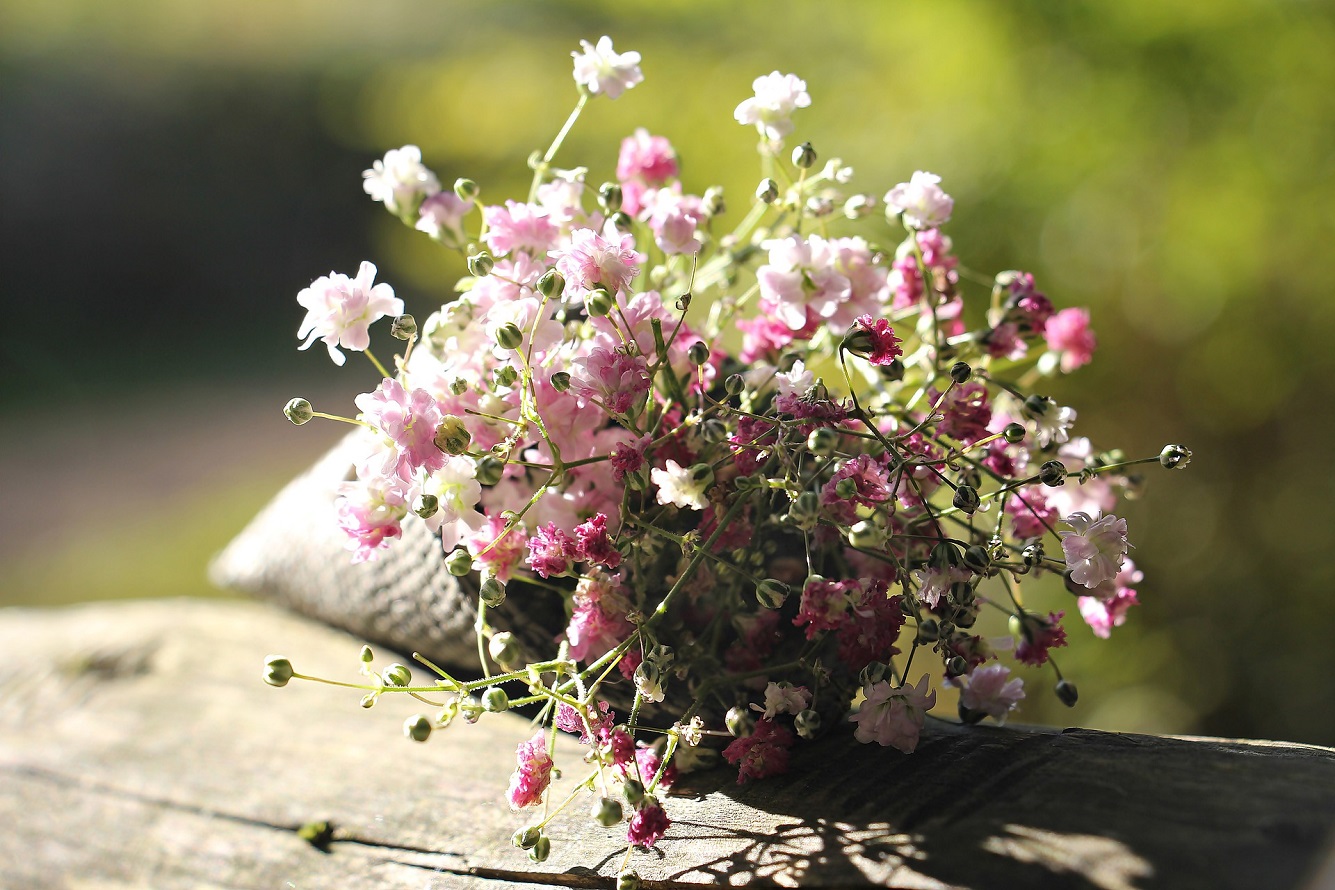
Baby’s breath – what kind of plant is it?
Baby’s breath (Gypsophila) is a plant from the Caryophyllaceae family. It grows naturally in the Mediterranean Sea regions – mostly because it loves warmth. Some varieties grow in Asia and Australia as well.
Baby’s breath can be easily grown in a garden or on a balcony. But note it requires certain conditions to develop – it’s quite a demanding flower. It looks beautiful in the company of other plants or ornamental shrubs. Most importantly, gypsophila can be used in bouquets decorating home interiors.
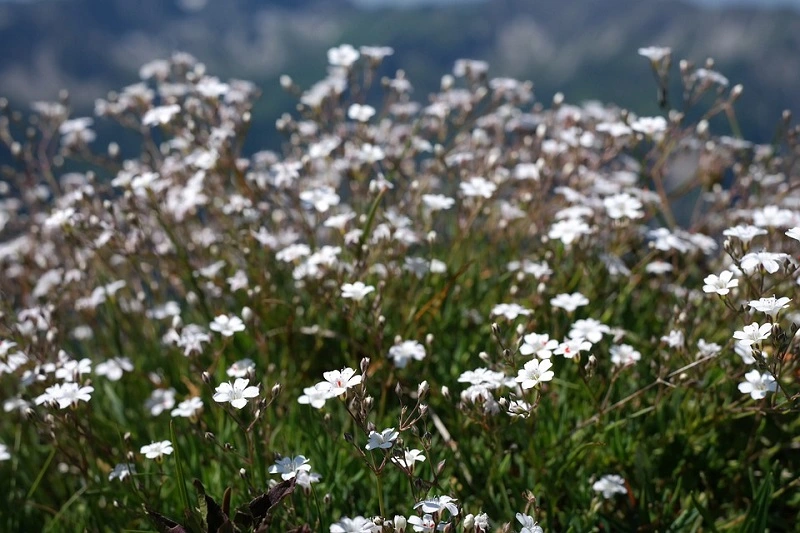
What does baby’s breath look like?
The appearance of a baby’s breath flower depends mostly on its variety. But most of them don’t grow taller than 80-90 cm (2.62-2.95 ft). The plant is slightly bushy, and its branches are very delicate. Their tips are ended with many flowers.
Panicled baby’s breath with white flowers is the most popular variety. It can have other colors such as:
- pink,
- purple.
What location and soil does baby’s breath prefer?
Slightly sandy or calcic soil is the best option for baby’s breath flower. Permeability is the most important aspect, as the plant dislikes standing water and reacts to it poorly. Picking the right soil is crucial for the plant’s growth. But it’s good to know that the plant doesn’t like transplanting, so make sure it stays in one spot after planting.
Gypsophila prefers sunny locations – that’s where the plant develops the most copious amounts of flowers. Also, note that baby’s breath requires protection from the wind. Strong blows might break the delicate stems.
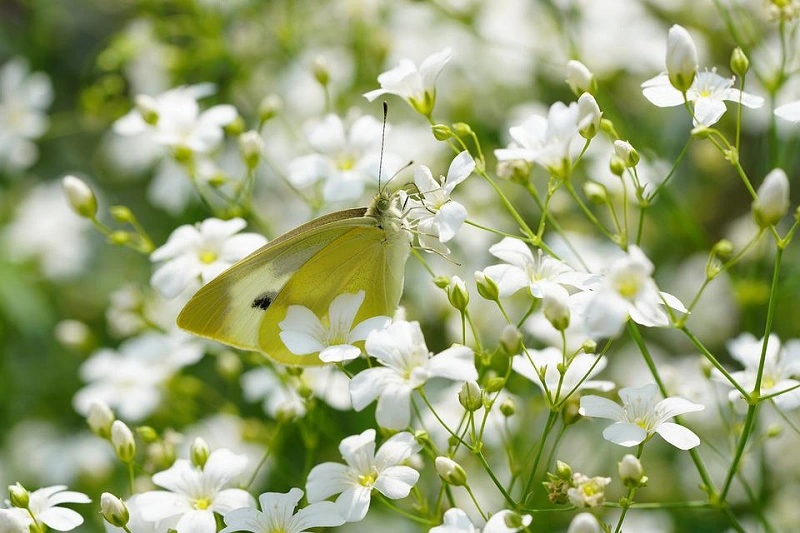
How to grow baby’s breath – basic plant care
Baby’s breath requires excellent growing conditions. But taking care of the plant is not complicated. Regardless, you should take care of several essentials to enjoy beautiful blooming.
- If the stems of gypsophila are growing intensely, you might decide to support them with a stick. You can use metal or bamboo rods for this purpose – they can be found in garden centers.
- Don’t water your baby’s breath too often – even if there’s a long drought. If it lasts longer than a week, make sure to mist the plant with water.
- Regularly fertilize baby’s breath plant with a product designed for flowering plants. You can use universal mixes or a fertilizer with potassium, calcium, and nitrogen.
- Gypsophila has to be cut after it finished blooming. This way, the plant can regenerate better.
How and when to plant baby’s breath seeds?
Before planting baby’s breath, one has to prepare seedlings. The seeds should be planted in containers and kept indoors – as early as between January and February. This way, they can be planted in the ground in March.
Note that gypsophila is a plant that grows broad. It means that you need to keep wide spacing between the seedlings. Thanks to this, the flowers can properly develop. A distance of about 60 cm (ca. 2 ft) is enough.
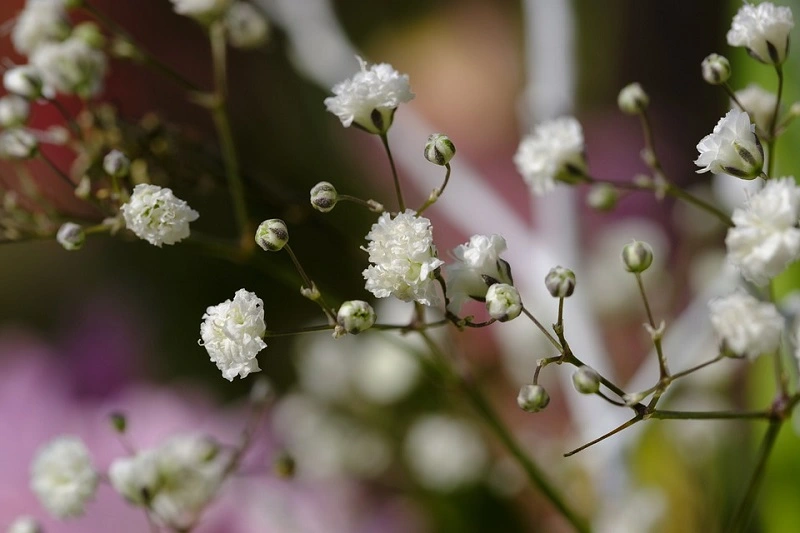
What to do with baby’s breath in winter?
Baby’s breath wintering is not an obvious matter. Most importantly, the variety of the plant decides whether it’s even possible. Some are annuals, which means there’s no need for it.
If you pick perennial baby’s breath varieties, overwintering them might be a difficult process. The plant needs protection against unfavorable weather conditions. You can use leaves and tree branches to cover it. A fabric cover is also a good option.
Baby’s breath – popular varieties
It’s estimated that there are about 100 different varieties of baby’s breath plant. Some are annuals, others perennials. Keep that in mind when choosing a particular one.
The most popular gypsophila plants include:
- Pacific baby’s breath (Gypsophila pacifica)
- Creeping baby’s breath ‘Rosea’ (Gypsophila repens ‘Rosea’)
- Creeping baby’s breath ‘Letchworth’ (Gypsophila repens ‘Letchworth’)
- Common baby’s breath ‘Flamingo’ (Gypsophila paniculata ‘Flamingo’)
- Alpine baby’s breath (Gypsophila aretioides)
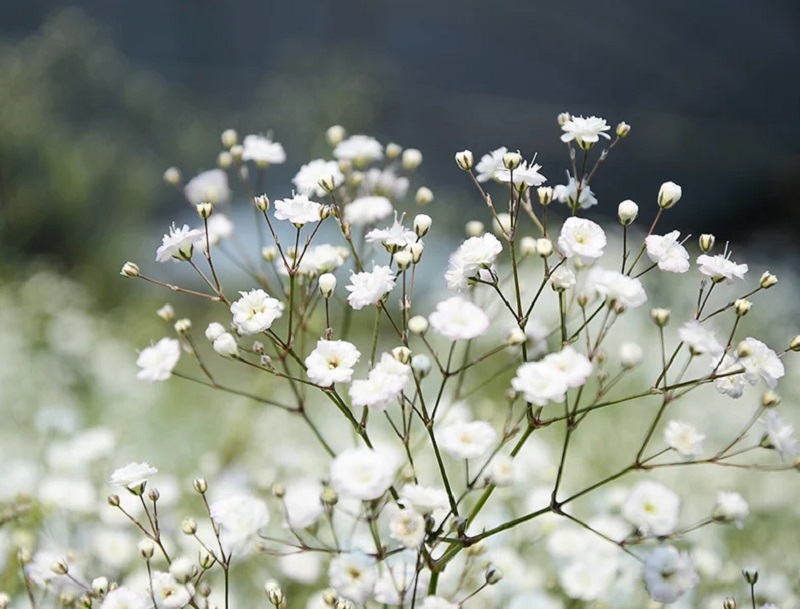
Is baby’s breath flower prone to diseases and pests?
Baby’s breath is a very resistant plant, so basically no diseases affect it. Excessive moisture is the biggest threat to this flower – if it persists for too long, the plant’s roots might begin to rot.
It’s quite similar with pests. If well-taken-care-for, the plant isn’t likely to get affected by any insects. Slugs are the only real danger – they mostly attack the plant’s leaves. But there are many ways to protect the flowers from them. Make sure to take care of it, especially in spring.
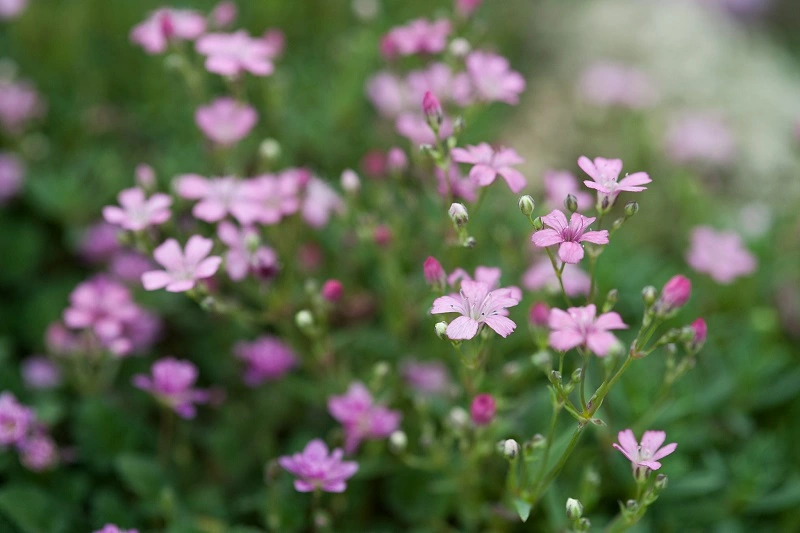
📍 When does baby's breath develop flowers?
The blooming time of baby's breath plants greatly depends on the variety. Most of them keep their flowers through the entire duration of summer – from June until the end of August. If the weather is good, gypsophila's flowers might last in September as well.
📍 Where to plant baby's breath?
Baby's breath requires special growing conditions. The spot for the plant has to be sunny and shielded from the wind. The soil should be light and permeable – sandy soil is the best option. It shouldn't be too moist.
📍 How to plant baby's breath?
Baby's breath can be sown directly in the ground. You can also prepare seedlings. The latter method is definitely better. The seeds can be planted in containers at the end of January. The seedlings can be moved to the ground as early as March.
📍 How much does baby's breath cost?
Baby's breath seeds are among the cheapest ones, regardless of the variety of the plant. Depending on where you decide to buy them, they cost between $3 and $5.
Featured articles




